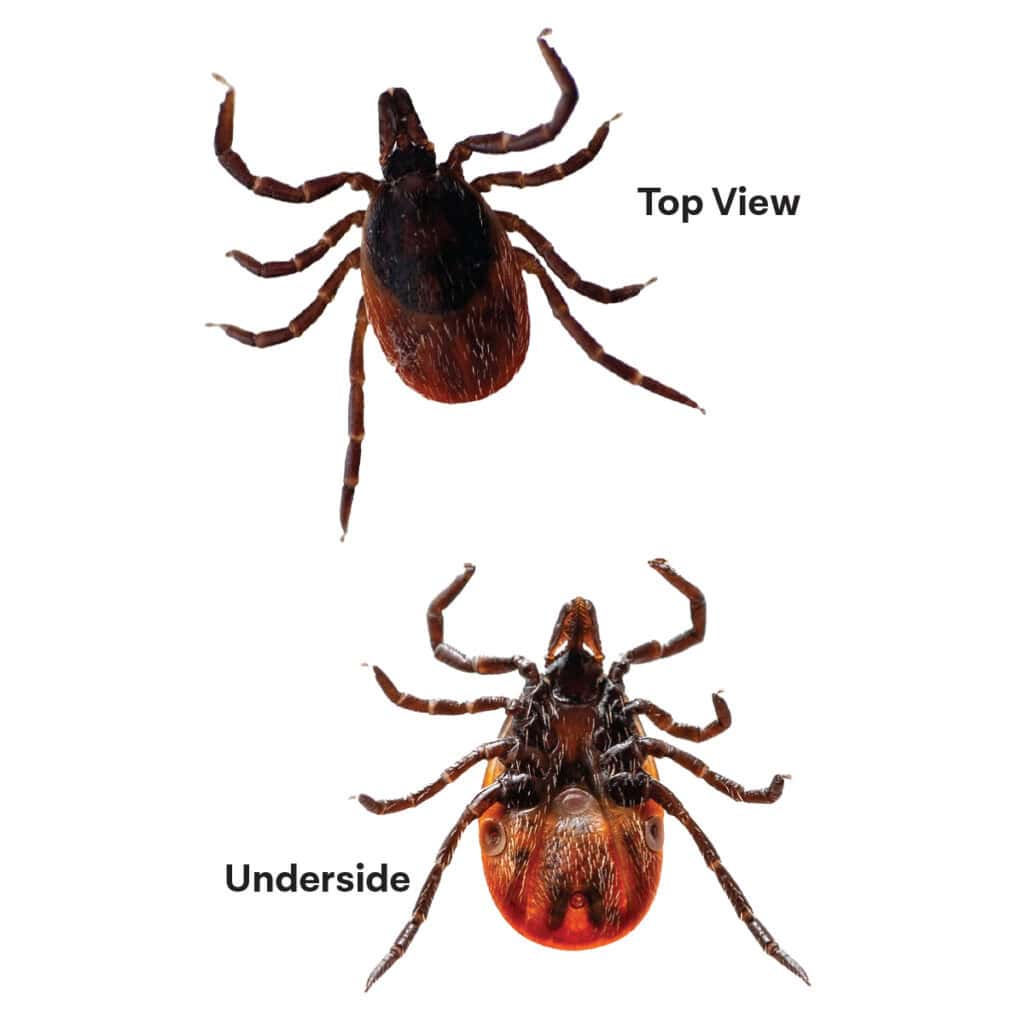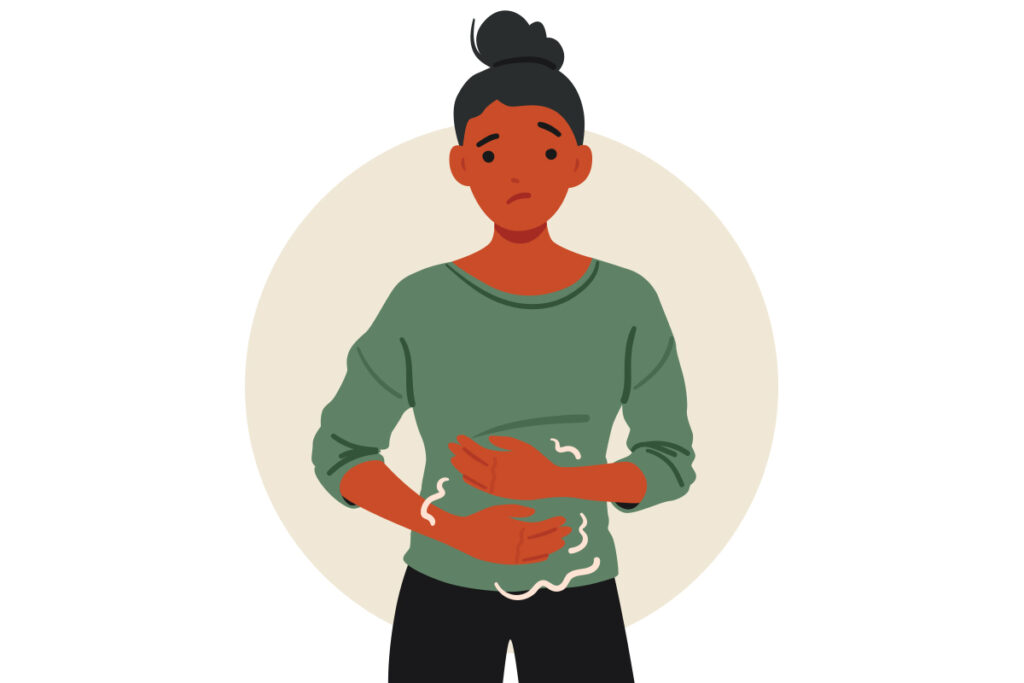Lyme Disease: A Comprehensive Guide
Lyme disease, casued by the bacteria Borrelia burgdorferi and transmitted through infected tick bites, is the most common vector-borne disease in the United States. In 2022 alone, the CDC reported roughly 63,000 confirmed cases. As the weather begins to warm up this spring and people get back to outdoor activities – like hiking, gardening, and even just walking through tall grass – instances of tick bites and subsequent Lyme disease infections are likely to increase. Read on to learn more about the symptoms, treatment, and prevention of Lyme disease so you can keep yourself and your loved ones safe in the outdoors.
Transmission of Lyme Disease
Lyme disease is primarily transmitted through the bite of infected black-legged ticks, commonly known as deer ticks, which latch on to skin and transfer bacteria into the bloodstream in the process. Not all ticks carry the bacteria that causes Lyme disease (Borrelia burgdorferi), but those that do can spread the disease if they remain attached for an extended period – typically over 24 hours.
Lyme Disease Symptoms
Early Symptoms (3-30 days after tick bite)
Erythema migrans (EM) rash: Often the first sign of Lyme disease, this typically appears as a red, bullseye-shaped rash around the site of the tick bite. While this is a common symptom, it does not necessarily appear in every case of Lyme disease.

It is very common to have a small bump or redness (similar to mosquito bites) immediately after a tick bite, but if the irritation lasts longer than a day or two it can be a sign of infections like Lyme disease and should be checked by a doctor.
Flu-like symptoms: Fever, chills, fatigue, headache, swollen lymph nodes, and body aches are common in the early stages of Lyme disease, and can occur with or without the telltale bullseye rash. If you develop flu-like symptoms after finding a tick on your body, see your doctor for testing to rule out Lyme disease as soon as possible – it is best to begin treatment early, before more severe symptoms develop.
Later Symptoms (days to months after tick bite)
Neurological changes: If left untreated, Lyme disease can affect the nervous system and lead to symptoms such as facial paralysis, severe headaches, numbness or tingling in the hands or feet, and problems with memory or concentration. Unexplained or sudden neurological changes are never something to ignore, and you should seek medical treatment promptly if you or a loved one are experiencing these symptoms.
Joint and nerve pain: Lyme disease can cause inflammation in the joints, leading to symptoms similar to arthritis, such as swelling, stiffness, and pain, especially in the knees. It can also cause shooting nerve pain and intermittent pain in the muscles, tendons, and even bones.
Additional symptoms include heart palpitations or irregular heartbeat, episodes of dizziness or shortness of breath, and additional EM rashes which can show up on different areas of the body.
Treatment: Early detection and treatment are crucial for effectively managing Lyme disease, and most cases can be resolved when they are caught in the early stages. Antibiotics are the primary treatment for Lyme disease, with doxycycline, amoxicillin, and cefuroxime axetil being most commonly prescribed.
For early-stage Lyme disease, a course of oral antibiotics lasting two to three weeks is typically sufficient. In cases where the disease has progressed to the nervous system or joints, intravenous antibiotics may be necessary for a more extended period.
Post-Treatment Lyme Disease Syndrome (PTLDS):
For most people, symptoms of Lyme disease resolve over time. In some cases, however, Post-Treatment Lyme Disease Syndrome can cause prolonged symptoms that can affect quality of life even after antibiotics have been used to treat the infection.

Preventing Lyme Disease
Preventing Lyme disease primarily involves minimizing exposure to ticks and taking precautionary measures when spending time outdoors – particularly in wooded or grassy areas where ticks are prevalent. Here are some preventive measures you can take to keep yourself and your loved ones tick-free as you enjoy the outdoors:
Use insect repellant: The CDC recommends treating clothes and outdoor gear with products containing 0.5% permethrin, a tick-repellant commonly used to treat boots and camping gear. You can also buy clothing and materials that are pre-treated with permethrin. You should also apply insect repellant directly to the skin. Look for products that specifically mention tick protection, and make use of the EPA’s registered list of insect repellants to find the best products for you and your family.
Natural Deterrents: Essential oils have proven to be a great natural deterrent to ticks. The most popular and effective essential oils are citronella, oregano, thyme, and clove bud oils.
Wear protective clothing: Wear long sleeves, pants, and closed-toe shoes when walking in wooded or grassy areas. Tuck pants into socks or boots to prevent ticks from reaching the skin.
Perform tick checks: After spending time outdoors, thoroughly check yourself, your children, and pets for ticks. Pay close attention to areas such as the scalp, behind the ears, and around the waistband. Additionally, be sure that no stowaway ticks hitched a ride on any of your camping or hiking gear, as that could lead to bites later on.
Create a tick-safe environment: Keep grass trimmed short, remove leaf litter, and create barriers like gravel or wood chips between wooded areas and your yard to discourage tick activity.
Use tick repellent for pets: Use veterinarian-recommended tick preventatives for pets and check them regularly for ticks, especially after outdoor activities.





